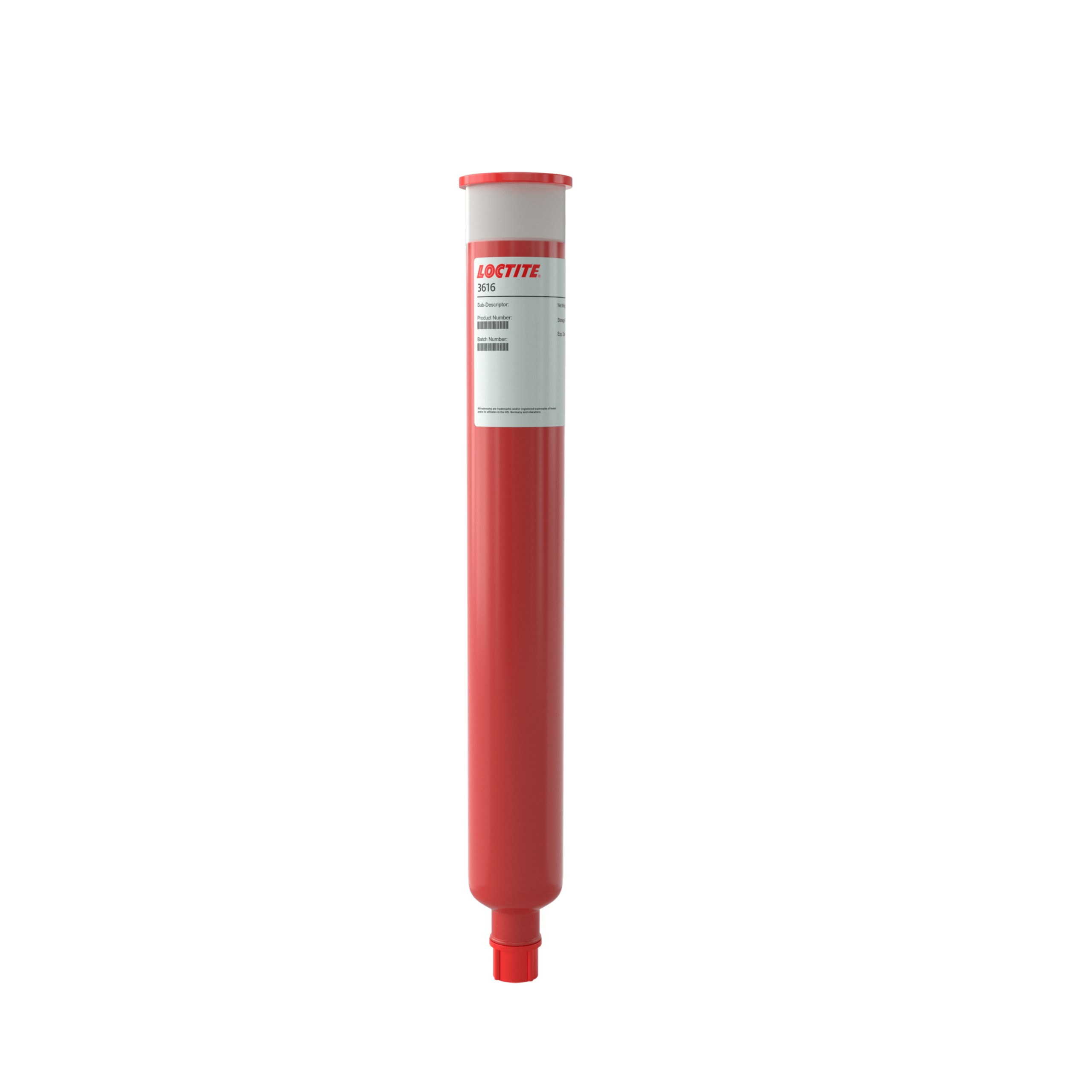LOCTITE 3616
Harmonization Code : 3907.30.00.90 | Polyacetals, other polyethers and epoxide resins, in primary forms; polycarbonates, alkyd resins, polyallyl esters and other polyesters, in primary forms : Epoxide resins : Other
Main features
- One component
- High wet strength
- SMD to PCB adhesive
Product Description
LOCTITE 3616 is a "chipbonder" designed for the bonding of surface mounted devices to printed circuit boards prior to wave soldering. Particularly suited to printing a range of dot heights with one stencil thickness and where high wet strength characteristics, and high print speeds are required.
LOCTITE 3616 is a heat curable and stencil printable, red, viscous, surface mount adhesive that is commonly used to attach small parts and SMD components on PCB.
Cure Schedule
- Recommended conditions for curing are exposure to heat above 100 °C (typically 90-120 seconds @ 150 °C).
- Rate of cure and final strength will depend on the residence time at the cure temperature.
Technical Specifications
| General Properties | |||||
| Density (g) | 1.3 g/cm3 | ||||
| Specific Gravity Specific Gravity Specific gravity (SG) is the ratio of the density of a substance to the density of a reference substance; equivalently, it is the ratio of the mass of a substance to the mass of a reference substance for the same given volume. For liquids, the reference substance is almost always water (1), while for gases, it is air (1.18) at room temperature. Specific gravity is unitless. | 1.33 | ||||
| Thermal Properties | |||||
| Glass Transition Temperature (Tg) Glass Transition Temperature (Tg) The glass transition temperature for organic adhesives is a temperature region where the polymers change from glassy and brittle to soft and rubbery. Increasing the temperature further continues the softening process as the viscosity drops too. Temperatures between the glass transition temperature and below the decomposition point of the adhesive are the best region for bonding. The glass-transition temperature Tg of a material characterizes the range of temperatures over which this glass transition occurs. | 140 °C | ||||
| Thermal Conductivity Thermal Conductivity Thermal conductivity describes the ability of a material to conduct heat. It is required by power packages in order to dissipate heat and maintain stable electrical performance. Thermal conductivity units are [W/(m K)] in the SI system and [Btu/(hr ft °F)] in the Imperial system. | 0.2 W/m.K | ||||
| |||||
| Physical Properties | |||||
| Viscosity Viscosity Viscosity is a measurement of a fluid’s resistance to flow. Viscosity is commonly measured in centiPoise (cP). One cP is defined as the viscosity of water and all other viscosities are derived from this base. MPa is another common unit with a 1:1 conversion to cP. A product like honey would have a much higher viscosity -around 10,000 cPs- compared to water. As a result, honey would flow much slower out of a tipped glass than water would. The viscosity of a material can be decreased with an increase in temperature in order to better suit an application | 25,000 mPa.s | ||||



